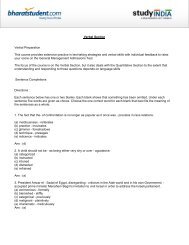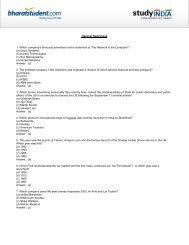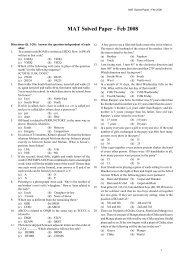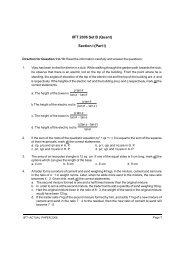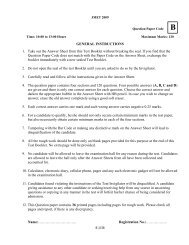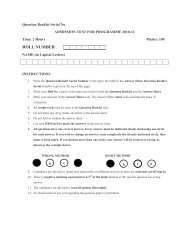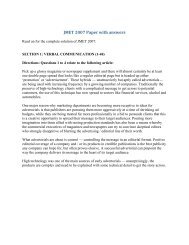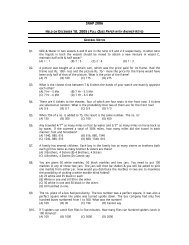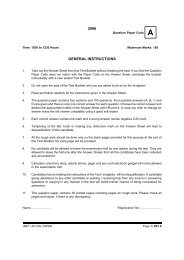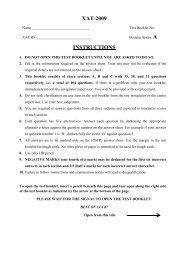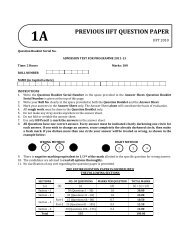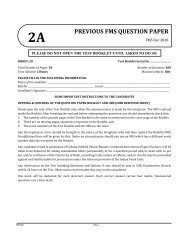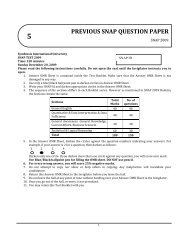SERIES 11 Test Booklet Serial No - Bharatstudent.com
SERIES 11 Test Booklet Serial No - Bharatstudent.com
SERIES 11 Test Booklet Serial No - Bharatstudent.com
You also want an ePaper? Increase the reach of your titles
YUMPU automatically turns print PDFs into web optimized ePapers that Google loves.
2. The risk in these investments is also high as many research products may turn out to be<br />
unfruitful.<br />
3. Though costly to produce, intellectual property can be easily copied or misappropriated and<br />
the marginal costs in doing so are very low.<br />
4. Intellectual property often depends upon other intellectual property for its successful<br />
<strong>com</strong>mercial exploitation.<br />
These characteristics explain an IPR holder's special concerns for protecting his It by<br />
incorporating conditions and restraints that would ensure his property cot copied. For example,<br />
some of the restrictions are cross-licensing agreements, tying, exclusive dealing and exclusive<br />
territories.<br />
On the other hand, there are practices or constraints which are not directly required for protecting<br />
IPR and restrict <strong>com</strong>petition in unjustifiable ways. Some of the objectionable practices are patent<br />
pooling, grant back, refusal to deal, payment of royalty after expiry of patent period, condition<br />
that the licensee will not challenge the validity of IPR and using tie-in by the IPR holder to gain<br />
access in other product markets.<br />
In some merger cases where the merged parties are the only two having IPR over the same<br />
product, the <strong>com</strong>petition authority's concern is that this could lead to market power in the hands of<br />
the merged parties in that product market. For example, in the merger of Ciba-Geigy with Sandoz,<br />
the two were among the very few entities capable of <strong>com</strong>mercially developing a broad range of<br />
gene therapy products. The <strong>com</strong>petition authority agreed not to block the merger only after the<br />
merging parties agreed to certain <strong>com</strong>pulsory licensing conditions. Similarly with Glaxo and<br />
Wel<strong>com</strong>e: both had products in the US' Food and Drug Administration approval process for<br />
treating migraine with an oral dosage; the <strong>com</strong>petition authority had difficulty in agreeing without<br />
conditions that would mitigate the merged parties' market power.<br />
<strong>11</strong>3. Which of the following statements is false regarding the relationship between <strong>com</strong>petition and<br />
Intellectual Property Right (IPR)?<br />
(1) Cross-licensing agreements protect the IPR holder against free riders of innovation<br />
(2) Mergers and acquisitions increase the risk of creating monopolists in the area of an<br />
innovation<br />
(3) Monopolists have the money and motivation to engage in research and development<br />
(4) At the fundamental level <strong>com</strong>petition law does not challenge IPR<br />
<strong>11</strong>4. Which set of risks are most relevant to developing intellectual property for a <strong>com</strong>mercial<br />
organization?<br />
(1) cost, redundancy, imitation, cross dependence



